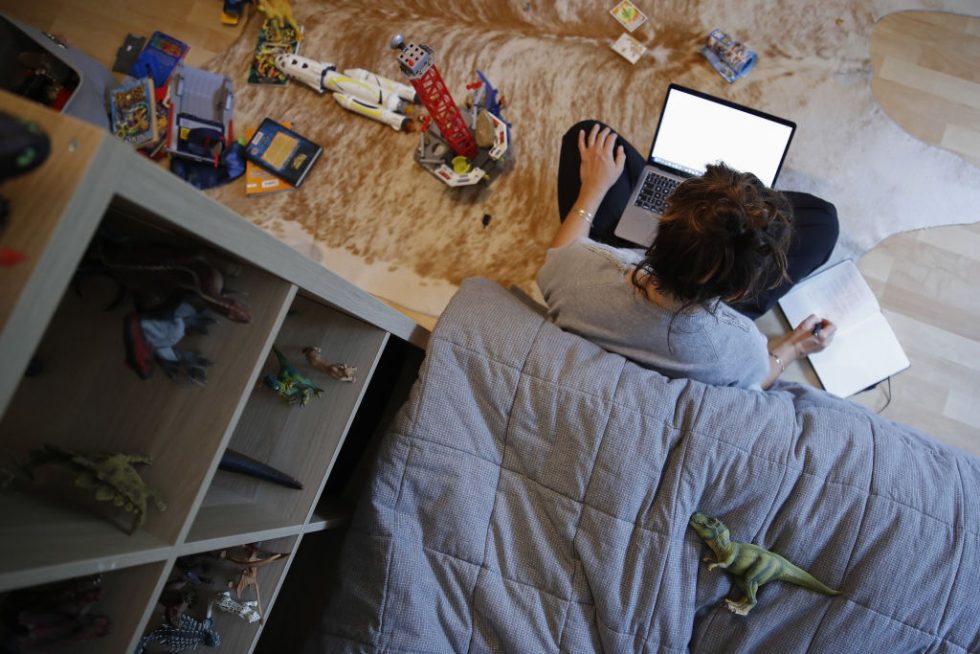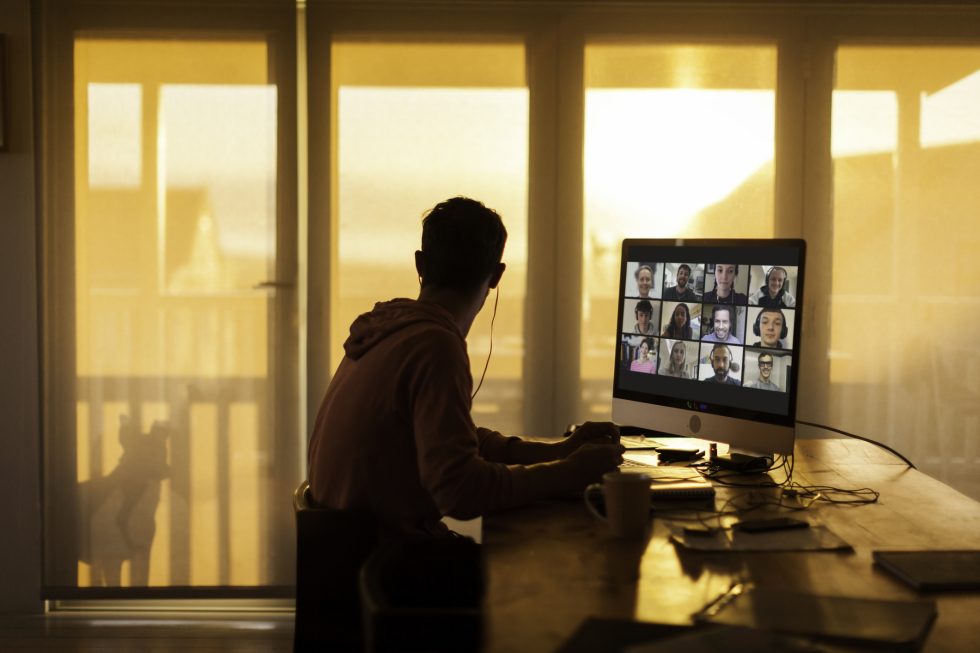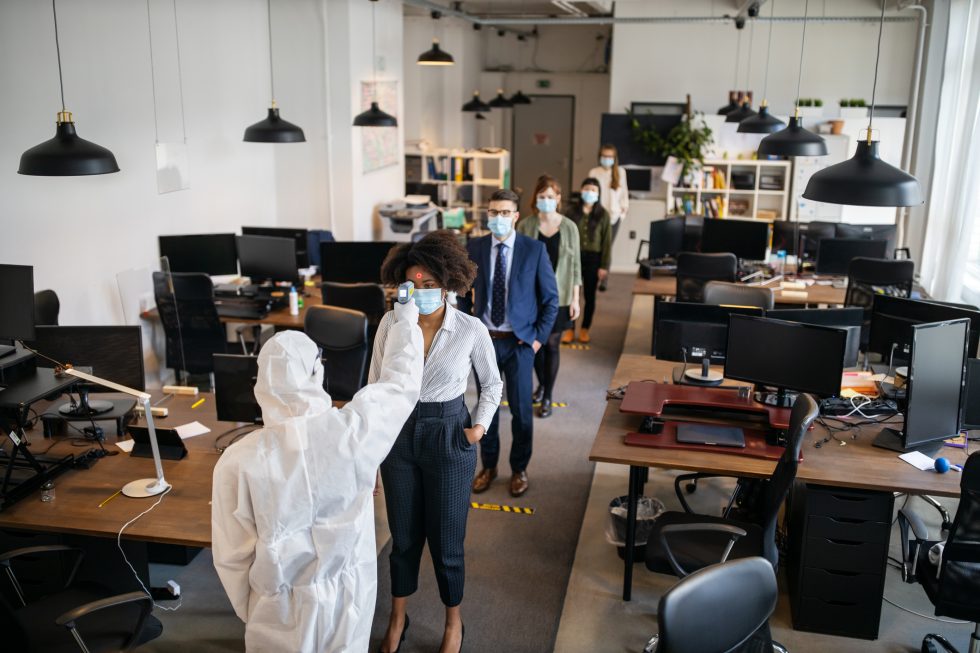Over the past few weeks, weve been talking about how best to manage the current state of work and what companies will need to do in the near and not-too-distant future to adjust to post-pandemic reality. As expected, our readers had some opinions on these topics, too—ranging from insightful to inciteful.
So, in the interest of better surfacing the wisdom of our particular crowd, Ive curated some of the thoughts of the Ars community on the topics of working better from home and what our shared experiences have taught us about the future of collaboration technology and the future nature of the corporate office. As always, we hope youll share additional wisdom in the comments here, as they may guide some future coverage on issues related to the realities of future work.
Home office adjustments
It came as no surprise that many of our long-time readers have had relatively no difficulty adjusting to working from home over the past six months—some already did, while others already may have had more computing power in their home environment than some companies data centers can muster. And there was a fairly consistent theme of improved productivity. As veteran Arsian Zippy Peanut commented:
[T]his is a situation where being a PC gamer mitigated many of the concerns raised in this article. For me, sustained PC gaming has always demanded good ergonomics, especially for an old guy like me; so, switching to working from home was actually ergonomically better, except for the lighting – and that took five minutes to fix.And the PC? Let's just say that spreading Chrome, Edge, various data bases, Word, Excel, and Reader across two enormous gaming monitors, as opposed [to] the cheapos at work, has been a huge improvement and has improved productivity. Now, if only my workplace's VPN could get a little faster….
Zippy also got a lot of love for remarks on the necessity for physical activity during the work day, in response to comments about sore legs. “Try getting up more frequently. Try to take several short walks throughout the day. And try to get some hamstring stretches in too: a daily, disciplined stretching regimen will help your whole body. This is basic stuff most folks can fit into their day. If you want to take it up a notch: yoga! – the fountain of youth.”

I have found that using a standing desk and a balance board ups my physical activity some, but never enough to close my accursed activity rings. A change of scenery—even if its just to a spot big enough to hold a yoga mat—is important.
You may have to create that space. Ive been doing the home office thing for a long time, but one of the best things I did when I changed jobs was to take a few days to totally restructure my workspace. That included purging a lot of stuff—a step highly recommended by Ars senior forum member Navalia Vigilate:
Do yourself a favor and take the time to at least perform a 50% clean up of that hobby-room desk area. De-clutter, throw away some things you haven't used since January. It will be good for you for both working from home and for the hobbies. It will suck, until it suddenly stops sucking, then it will be nice.
Good office seating is key to home-work survival, and several readers pointed out ways to obtain quality office chairs without breaking the bank. KingKrayola noted, “Dont let [Herman Miller] hear this, but their range of meeting and visitor chairs are half the price of their task chairs, dont need an ergonomics expert to set up, and work just fine.”
As for the top of the line from Herman Miller and Steelcase, thegrommit pointed out, “Used office furniture stores will often have these at much lower prices. They will have plenty of stock as the trend of companies closing and/or reducing capacity of offices accelerates.” However, Pusher of Buttons warned, “I will toss out that the internet is filled with some less than ethical companies that resell high end office furniture and for buyer-beware if you see deals that just seem too good to be true. I ran into this researching my purchase.”
In terms of technical advice, there were plenty of recommendations regarding new hardware—like picking a monitor that is also a USB-C hub. A USB-C hub that can pass power through was essential for my wife, who uses a MacBook, and for my set-up for my corporate-issued MacBook Pro. Not all PCs charge from USB-C, so you may not be able to achieve one-outlet zen—but it will sure help with wire management (and with three computers and three monitors on my desk, my wire management needs all the help it can get).
Laptop stands also factored heavily in reader recommendations—especially ones with cooling. Flerchin gave a full accounting of his new layout, including an unexpected workspace:
I'm WFH until at least a year from now. Pay has been cut a bit, but even so the savings on the commute more than make up for it. I went to the office and brought home my chair (with permission). I got an Autonomous standing desk, North Bayou monitor arms, 2 Viewsonic monitors, a docking station, and a Nexstand laptop stand for my work laptop. I set the whole thing up in my walkin closet, that fortunately has a window for monitor backlighting. I tell people in video calls that I work in fashion. All in, about $700, far less than the "stimulus check."
A note on monitors: you may be tempted to use a television as a monitor, because hey! Dual use! But be careful to go as high-definition as you can. While laptop monitors may not be big and bright enough for all-day use without eye strain, the wrong monitor might make things difficult, as pbat found:
I started the lockdown period working on my MacBook (13") and two big Nec monitors from my office (27" I think, I don't remember the resolution but they are NOT 4k). After the first day I realised that my eyes were tired of switching from the lower-resolution NEC to the MacBook. I tried to decrease the resolution in order to increase DPI on the NEC, but the difference in how text was rendered was still noticeable and bothered me.
I did some googling on how to have retina-like display on external, non-Apple monitors and I came to the conclusion that the only viable way was to use 4K monitors.Yes indeed! I first tried a massive 4k TV from a friend of mine, then bought a 4K LG monitor and it works perfectly! The text is as crisp as on the MacBook and my eyes are less tired. Best 300 Euros spent in lockdown.

Collaboration
Aside from responding with protests of post-traumatic stress after I mentioned Lotus Notes in our article on the future of collaboration, our readers had some on-point thoughts on the current strengths and weaknesses of collaboration technology—particularly in the face of current circumstances. And one of the problems is collaborating across companies effectively.
“[The] biggest problem I find is scaling outwards,” wrote robrob. “There's no equivalent to get everyone in a room and work it out that really works as well when it comes to multiple companies being involved. I had to deal with people on 4 different domains the other day, it didn't go well because there's no standards here, everyone wanted to share files differently, use different video platforms, the collaboration really broke down quickly because there's no standard behaviour.”
But within his organization, robrob noted, collaboration has been “fine, especially as the team gets used to the tools…we've gone from having to explain where files actually are when they're in Teams to pretty constant meetings that run like casual office conversations and most people being able to keep shared documents up to date. There's far less reminding people where files are, more people diving into tools and learning things themselves.”
Everyone had their own particular tool preferences. Penguin Warlord suggested a virtual whiteboarding platform to help get closer to the “everyone in the room” feel. “It's probably still not quite going to scratch that itch, but we recently started using Miro's online whiteboarding software,” Penguin wrote, “and it's actually a really nice virtual whiteboard. Way better than Microsoft Whiteboard or Onenote. Really easy and intuitive controls, sticky notes behave the way you'd expect, really easy to add arrows and start mapping relationships and such, and you can even upload files and stuff to the boards if you need to. It's also super easy to invite guest collaborators to sessions.”
Autopilot commented glowingly of Googles suite for collaboration on “serious stuff” (something Ars staff is intimately familiar with). “Google Docs are seriously awesome at both synchronous and async collaboration,” aztekum noted, and video and chat apps helped with quick synchronous communication. But aztekum also made some observations about the need to segment collaboration:
One of the most important lesson on remote collab over the years is how being remote can end up being always-online and always-public. Allow private, fenced off chatrooms – e.g. team or project focused, nobody but team can be there – to talk shop, sure, but also to shoot shit and do some gossipping / complaining / etc. people need that venting valve. also the fact that your message doesn't go out to 30+ people, and that it will within reason stay within the confines of the group, remove some of the agoraphobia. [And] make time for asynchronous work. having chat always on is bad for productivity. Make hours or even days where people are expected *not* to bug anyone, and if they need something, they can use email. people on this day are also not expected to keep email open. this way you can really focus on the problems.”
I had mentioned the unstructured collaboration opportunities that might be missed out of the office, but NuckFutter pointed out these were not necessarily watercooler moments. ”Honestly? What people miss is not the Eureka! moments happening in hallways because let's face it, those are often apocryphal. They miss the time they'd spend eating lunch together, bonding and talking about anything but work… We're fortunate to have a team that's been largely stable for over a decade, and there are some very tight bonds that have developed. Maybe that's made the transition easier. Work, like actual work related stuff, was already largely virtual given our geography anyway, and tools like Slack, and more recently Teams, had replaced the overuse of email or getting up to go bother someone.”
That point dovetailed well into some of the points I had made about what the strong points of offices were in our discussion of the future of the office.

Meatspace, the sequel
Not everyone is working from home right now, and some of our readers are experiencing “the future of the office” in very immediate ways. For example, organizations, such as the one Ars reader Hap works for, handle classified work—which places greater restrictions on where employees can be located physically. Even so, Haps organization is working to minimize its office footprint:
[I]n my current organization [more than] 80% of the folks work on classified items. Therefore they must be in the office. One of the other projects some of my engineers work on requires about 50% to work classified, but it varies up and down depending on what part of the lifecycle they are in. There is excellent remote support (we hit almost 100K in simultaneous VPN users at the peak) and didn't really have any issues. We may have some reduction in footprint in a couple of locations, but at my current location we're growing so fast we're going to have to put up another building even with some workers remote. When you have classified work, and personnel must be in the office – you have to have a minimum separation, even with masks. That requires space.” While operations and finance people and others are currently work from home, Hap said, “[the] majority of engineers are onsite, but I have to say the company is very, very diligent about COVID and taking care of the employees. As an example, some managers have been terminated for making people come in when the work did not require it.
Other readers noted that work-from-home wasnt an option for them, but only because of managements whims. Read More – Source
[contf] [contfnew] 
arstechnica
[contfnewc] [contfnewc]







